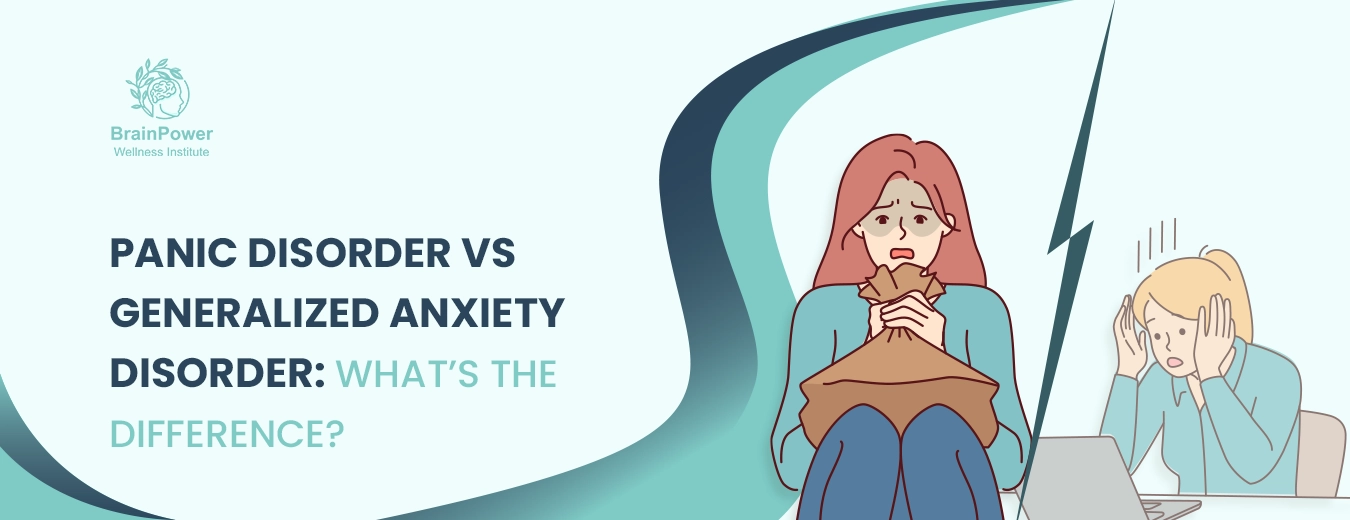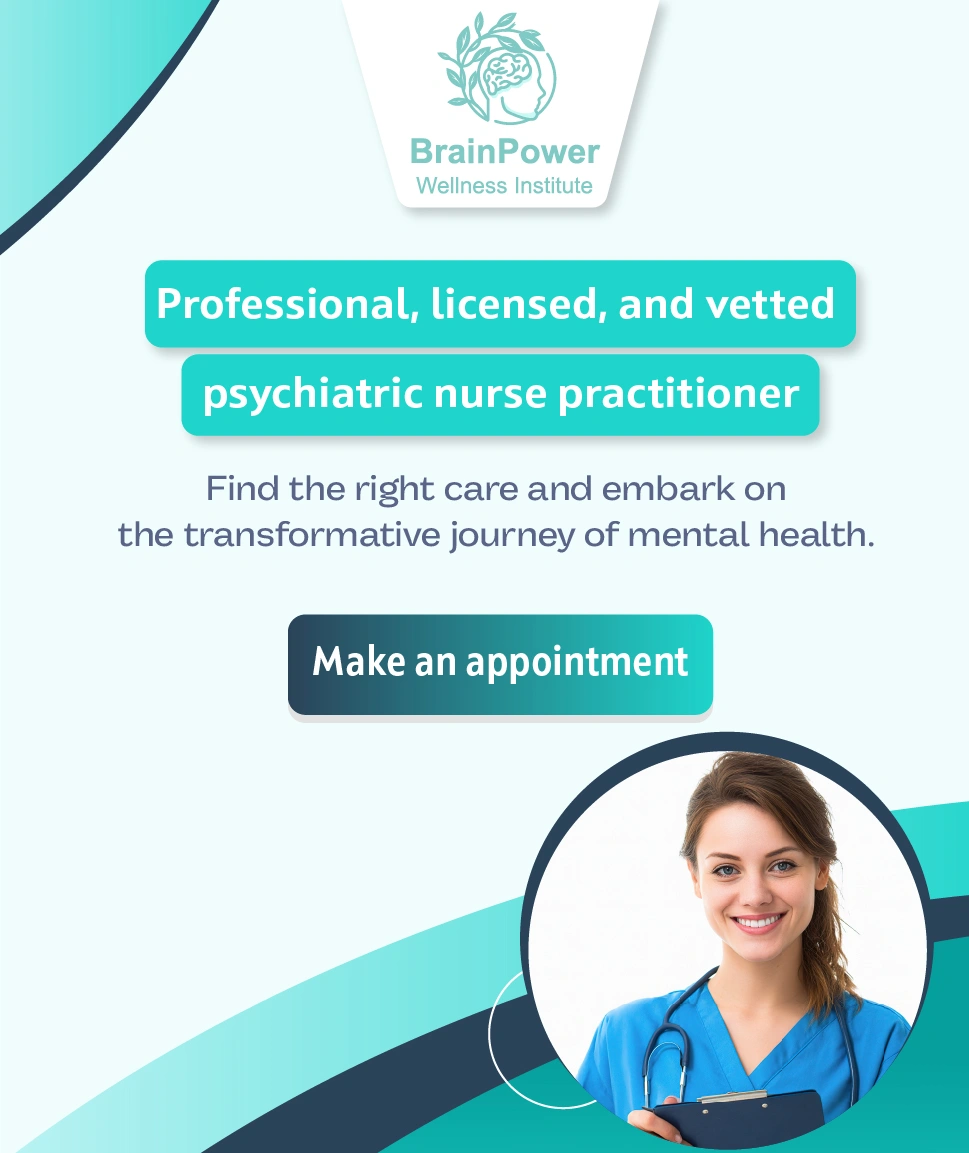Panic disorder and Generalized anxiety disorder are the common types of anxiety disorders in the United States. Although they share some common symptoms, there are major differences between them. These anxiety disorders are more commonly seen in adolescents and adults. However, children can also suffer from these mental disorders.
This article provides a comprehensive guide to panic disorder and generalized anxiety disorder. You will also understand the major similarities and differences between both mental issues. Understanding the key differences and similarities helps in early intervention or treatment of mental conditions. With the help of this article, you will also get familiar with the best treatment or coping strategies to live a stress-free life. So let’s get started.
Panic disorders vs. Generalized Anxiety disorder
‘’Panic disorder and Generalized anxiety disorder are common mental issues that affect thousands of US individuals. In generalized anxiety disorder, individuals take excessive stress. Moreover, their out-of-control worry disrupts their normal life activities. However, panic disorder comprises panic attacks which are sudden or intense episodes of fear, stress, or anxiety. Both generalized anxiety disorder and panic disorder disrupt the life functioning of individuals’’.
Anxiety disorders are common but complex mental conditions that are characterized by an extreme sense of fear, worry, and strong feelings of hopelessness and worthlessness. Panic disorders and generalized anxiety disorders are the types of mental issues or anxiety disorders. Generalized anxiety disorder involves the longer or continuous phase of sadness while panic disorder involves unexpected and recurrent panic attacks.
Multiple studies have reported that approximately 40 million adults in the US have an anxiety disorder. Among them, 19.1% are adults. Likewise, approximately 33.7% of US adults suffer from anxiety disorder at any point in their lifetime. Moreover, women are more likely to suffer from anxiety disorder as compared to men.
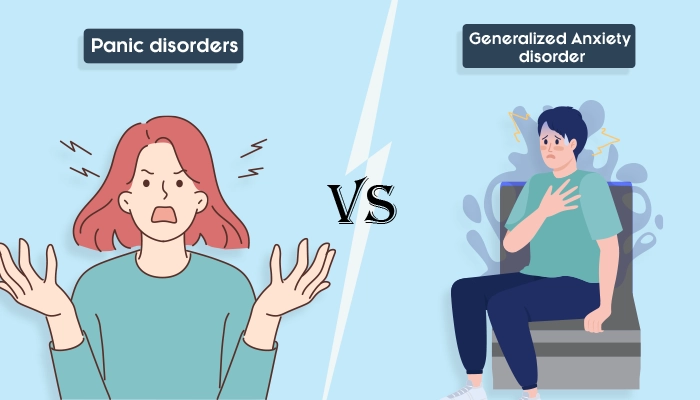
What are the types of Anxiety Disorders?
There are several types of anxiety disorders which include:
- Generalized anxiety disorder
- Panic disorder
- Specific phobias
- Social anxiety disorder
- Separation anxiety disorder
- Agoraphobia
Below, you can get a complete insight into two major types of anxiety disorders, panic disorders, and generalized anxiety disorders.
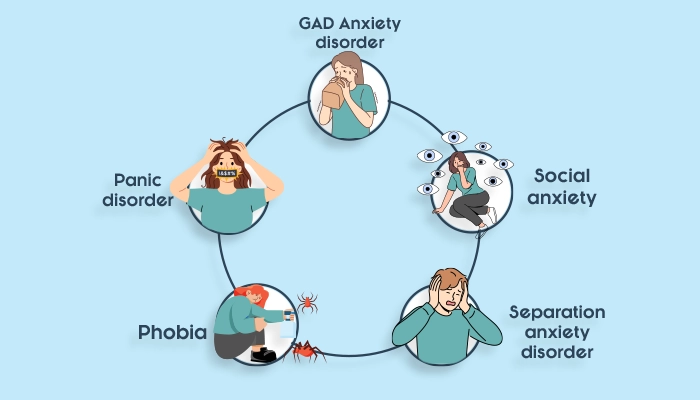
What is Panic Disorder?
Panic disorder is a mental illness and the most common type of anxiety disorder. This involves sudden and intense episodes of panic and fear. Due to panic attacks, individuals lose control over their minds and bodies. Although panic attacks occur in the presence of any danger, in most cases, the onset of panic attacks occurs without any apparent danger or unpleasant situation. The onset of panic attacks usually occurs in late adolescence or adulthood stages.
There is a direct link between panic attacks and fear. Whenever a person is reminded of any traumatic life situation or feels any danger, panic attacks occur. So whenever that fear or danger element comes, panic attacks also appear. This led to agoraphobia, a condition in which individuals usually avoid people or situations that they think can trigger panic attacks.
What is the prevalence of Panic Disorder?
Approximately, every 1 in 20 US individuals suffer from panic disorder in their life. Among all, women are more likely to suffer from panic disorder as compared to men.

Symptoms of Panic Disorder
According to the Diagnostic and Statistical Manual of Mental Disorders” (DSM-5), a panic attack is a sudden episode of extreme fear or panic. To get diagnosed with panic disorder, individuals must have any four symptoms. There is a diversity in the symptoms of panic disorder and individuals also exhibit different responses to panic disorder. Some common symptoms of panic disorder are as follows:
- Elevated heart rate
- Chills
- Chest pain
- Increased respiratory rate
- Reduced control over thoughts, emotions
- Sweating
- Trembling or shaking of hands
- Feelings of getting detached from the reality
- Dizziness
- Feelings of choking
- Fatigue or tiredness
- Nausea
- Vomiting
- Abdominal pain
- Fear of dying
- Intrusive thoughts
Although these symptoms appear immediately, then get a hike. However, after a few minutes, approximately 5 to 10 minutes, the intensity decreases and subsides. If the necessary treatment or preventive measures are not applied, then the duration of panic attacks can increase and acquire more severe forms.
What are the causes of Panic Disorder?
The most common causes of panic disorder include:
- Any traumatic life event or experience, such as personal and professional loss
- Any family member having a panic disorder
- Biochemical changes
- Environmental stressors
- Substance abuse
- Cognitive factors
- Physical conditions
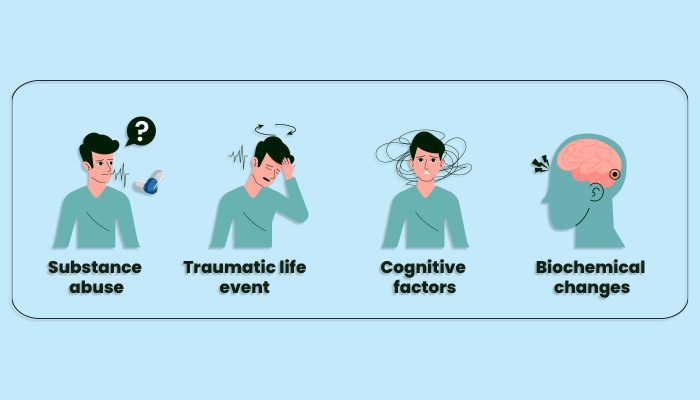
How is Panic disorder diagnosed?
Only professional mental health experts can effectively diagnose panic disorder. They utilize psychological or physical evaluation to identify the symptoms. Moreover, different checklists and rating scales are also useful in diagnosis.
What are the diagnostic criteria for a Panic disorder?
Individuals diagnosed with panic disorder must meet the following criteria:
- The onset of intense or recurrent panic attacks
- The occurrence of at least four to five symptoms of panic disorder
- One panic attack occurs in a month or after a month
What is the impact of Panic disorder on life?
Panic disorder is a severe form of anxiety disorder that impacts multiple aspects of each individual, such as:
Social isolation
Individuals always feel fear of having panic attacks anytime, and therefore they prefer to stay alone and avoid engaging in any social activity. They always have a fear of facing the same situation again. Due to social isolation, they also face the issues of loneliness and anxiety or depression.
Impact on academic life
Children with GAD do not take an interest in the process of learning and engaging in any productive activity. This in turn affects their academic performance. Moreover, they do not meet their academic requirements and are unable to get the grace marks.
Emotional distress
GAD children or adults also face difficulty in regulating their emotions. Moreover, they exhibit anger outbursts. Their fear of panic attacks increases their anxiety. If the condition persists, then it can also cause the development of other common mental issues such as depression.
Avoidance behavior
Individuals always try to avoid those situations, objects, or places that they think can trigger their anxiety or panic attacks. For example, some people avoid hanging out with friends, and some start avoiding visiting new places.
What is Generalized Anxiety disorder?
Generalized anxiety disorder is a mental illness that involves a persistent state of stress or worry about everyday life activities. Individuals feel difficulty in controlling their thoughts and emotions and therefore face difficulty in each aspect of their lives. As they do not feel at ease, they do not easily communicate with their friends and family in a better way. This then affects their relationships.
Always remember that becoming anxious is quite normal. Stress is a body’s natural response generated by the activation of the body’s sympathetic system. When the brain receives the environmental stimuli, this system gets activated, which in turn results in the fight or flight response. However, if you ever feel that your stress period is getting prolonged and your everyday worry is transforming into a mental illness, then you need to consult the mental health professionals.
The onset of GAD occurs in childhood or adolescent stages, however, the mental condition can persist to adulthood stages. Moreover, affected children do not pay attention in their classroom and face difficulty in learning. Likewise, adolescents and adults also face complexities at their workplace and fail to achieve excellence. The untreated GAD symptoms directly interfere with the functioning of life and negatively affect the quality of life.
What is the prevalence of GAD?
According to numerous recent studies, the lifetime prevalence of GAD in the United States is 5.7%. Just like other anxiety disorders, women are more prone to suffer from generalized anxiety disorder as compared to men.
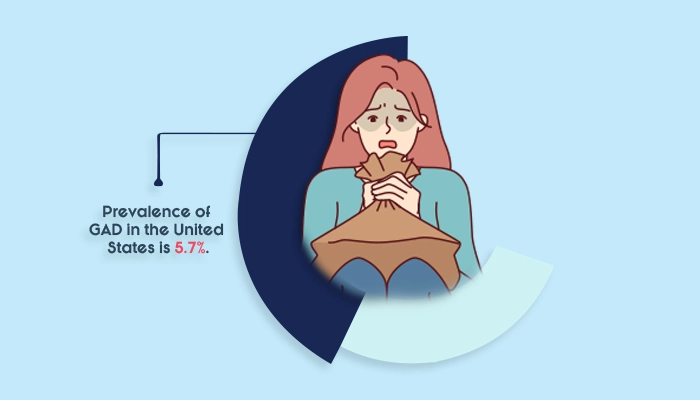
Symptoms of GAD
There is a range of psychological and physical symptoms of GAD that exert a negative impact on the lives of individuals.
Psychological symptoms
- Excessive stress
- Extreme overthinking
- Blurred thoughts
- Difficulty in learning
- Difficulty in making decisions
- Fear-based thought patterns
Physical symptoms
- Fatigue or tiredness
- Irritability
- Sense of restlessness
- Issues in the gastrointestinal tract
- Difficulty in the sleep-wake cycle
- Headache
- Muscle ache
- Muscle stiffness
How is GAD diagnosed?
Just like other common anxiety disorders, GAD is also diagnosed by mental health experts. They consider the results of psychological evaluation to diagnose the symptoms. After carefully analyzing the evaluation results, they develop therapeutic strategies accordingly.
What are the diagnostic criteria for Generalized anxiety disorder?
Mental health professionals can better diagnose the mental condition. The diagnostic criteria of GAD involve the following:
- Individuals are unable to control their excessive worry
- Individuals are taking stress for at least six months or more
- Individuals are exhibiting at least three to four symptoms of GAD
- The persistent phase of stress results in the impairment of daily functioning
- The person starts taking alcohol or any other drug
What are the causes of Generalized Anxiety disorder?
Generalized anxiety disorder is caused by multiple factors, which are as follows:
- Genetic factors
- Environmental factors
- Brain changes
- Neurotransmitter imbalance
- Medications
- Substance abuse
- Personality traits
- Presence of any physical illness
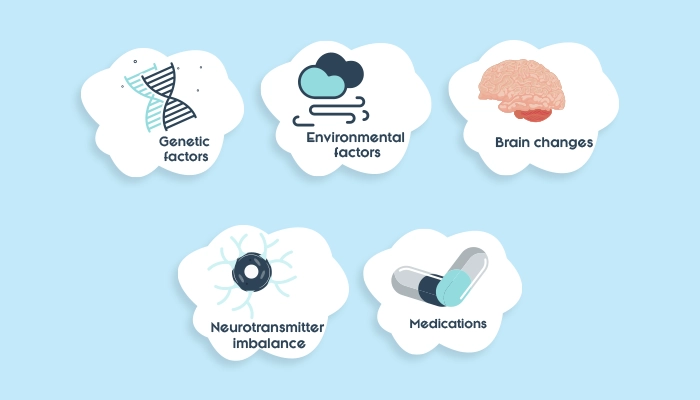
What is the impact of GAD on life?
Generalized anxiety disorder is also harmful to the mental stability of individuals. Moreover, it also imparts major negative changes in different areas of life such as:
Daily life functioning
Individuals suffering from GAD do not easily fulfill their responsibilities. Moreover, they do not focus on the things that they do daily and fail to pay attention to their academic and professional life.
Relationships
Due to prolonged stress, individuals do not express their emotions and whenever they speak, they exhibit negativity. This in turn results in conflict between them and negatively affects their relationships.
Physical health issues
Due to GAD symptoms, physical health is also affected. If the anxiousness persists, multiple physical changes appear in the body, such as increased heart rate and breathing rate, physical discomfort, etc.
What are the major differences between Panic disorder and Generalized Anxiety disorder?
Several factors in both panic disorder and generalized anxiety disorder are distinct. This table highlights the major differences between both mental illnesses.
| Panic disorder | Generalized Anxiety disorder |
| Panic disorder involves recurrent and intense panic attacks | GAD individuals take excessive stress on daily life activities |
| Increased heart rate, shortness of breath, chest pain, sweating, and shaking of hands | Fatigue or tiredness, sleep difficulty, muscle stiffness, gastrointestinal issues |
| The onset of panic attacks is rapid | The onset is gradual |
| Affected individuals lose control over their mind | The most often occurrence of intrusive or undesired negative thoughts that affect mental stability |
| The duration of panic attacks is shorter | Symptoms can remain for six months or more |
| Individuals exhibit avoidance behavior | Individuals perform excessive testing or checking to become aware of future situations |
| They also have a fear of future panic attacks or getting exposed to any distressing situation | Excessive worry and irritable behavior |
| This involves depersonalization | |
| Panic disorder does not involve persistent worries | GAD involves the long-lasting worry |
| Symptoms are more physical | Symptoms are more emotional and mental than physical |
| The common co-occurring disorders, such as agoraphobia and other common anxiety disorders | GAD coexists with other types of anxiety disorders and depression. |
Treatment for Panic disorder and GAD
Although both panic disorder and GAD are complex mental issues, the right effective treatment can help. Each type of anxiety disorder is treated with the help of psychotherapies and medication. Moreover, additional coping strategies are also helpful in preventing the development of both mental health disorders.
Psychotherapy
Psychotherapy is a talk therapy that involves communication between mental health professionals and mental health patients. Affected individuals share their mental issues with experts to manage their symptoms of mental illness. Among different types of psychotherapy, the following are most commonly used by the experts:
Cognitive behavioral therapy
Cognitive behavioral therapy is the most common type of psychotherapy used to treat mental illnesses. Any individual dealing with any kind of anxiety disorder can recover with the help of cognitive behavioral therapy. Experts conduct different cognitive therapy sessions in which they create a friendly and supportive environment where each affected individual speaks their heart out without any fear of judgment. Considering the mental health needs of each individual, experts develop customized treatment plans.
Exposure and Response Prevention Therapy
Exposure and response prevention therapy is a type of cognitive behavioral therapy that involves the exposure of individuals to situations or objects that they think can trigger their anxiety. Individuals first list down their fears based on the instructions of the mental health experts. Then individuals face their fears one by one and stop themselves from exhibiting the response. After repeating this in a few sessions, they become adapted to this and do not exhibit a response to their fear.
Medications
Antidepressants are considered the most effective first-line of treatment to treat generalized anxiety disorder and panic disorder. Moreover, the most common antidepressants include selective serotonin reuptake inhibitors, SNRIs, beta-blockers, Benzodiazepines, etc.
Coping strategies for Anxiety disorders
In addition to treatment options, multiple coping or preventive strategies help individuals manage the symptoms of their anxiety disorders such as:
Relaxation techniques
Relaxation techniques are ideal for achieving mental calmness. By regularly practicing relaxation techniques, individuals can feel calm, relaxed, and focused. The most common relaxation techniques include mindfulness techniques, meditation, yoga, and deep breathing exercises.
Lifestyle changes
If you want a positive mindset, then change your lifestyle. Focus on your diet and try to take healthy food products. Moreover, make a schedule of sleep and try to sleep and wake up at the same time. Furthermore, don’t forget to stretch your muscles if you want a healthy blood supply to your brain. Regularly perform a physical workout or any strenuous activity to feel mentally calm and relaxed.
Support Groups
Getting emotional support is also the best way to deal with panic disorder and generalized anxiety disorder. There are different support groups that you can join to get support. Your friends or family members can join the support groups and provide you with the desired emotional support.
Reach out to Brainpower Wellness Institute for Professional help today!
At Brainpower Wellness Institute, we are highly concerned with your mental health. We have a team of mental health experts who provide the best mental health services for the treatment of all common mental health issues including panic disorder, generalized anxiety disorder, etc. Our experts first perform a complete psychological evaluation to determine the actual mental illness and the severity of the symptoms. Based on the assessment results, they develop a treatment plan that tailors the needs of each individual. So whether you are battling with GAD or panic disorder, we are here to provide you with professional mental health assistance. So schedule a consultation with our experts and get the best mental health solutions today.
Reach out to Brainpower Wellness Institute to initiate your mental health journey.
